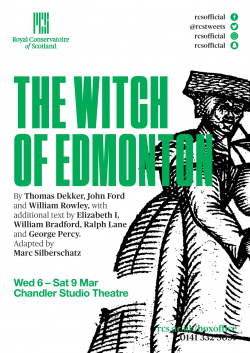The Witch of Edmonton: Difference between revisions
No edit summary |
No edit summary |
||
| Line 98: | Line 98: | ||
== Sound == | == Sound == | ||
=== The Team === | |||
Sound Design: Ruby Noble | |||
Production Sound Engineer: Nicholas Rubenacker | |||
Sound Technician: Lea Meloe | |||
=== Sound Design === | === Sound Design === | ||
Revision as of 12:49, 15 March 2019
| The Witch of Edmonton | |||||||||||||||||||||||||||||||||||||||||||||||||||
|---|---|---|---|---|---|---|---|---|---|---|---|---|---|---|---|---|---|---|---|---|---|---|---|---|---|---|---|---|---|---|---|---|---|---|---|---|---|---|---|---|---|---|---|---|---|---|---|---|---|---|---|

| |||||||||||||||||||||||||||||||||||||||||||||||||||
| |||||||||||||||||||||||||||||||||||||||||||||||||||
About
The Witch of Edmonton by Thomas Dekker, John Ford and William Rowley
Adapted and directed by Marc Silberschatz
Summary
On the shores of a new world, the settlement of Edmonton is founded. Outside the new-built walls is scarcity, disease and ontological ambiguity. Inside, an apparently harmonious community is beset with mendacity, fecklessness and unrestrained greed. Assailed with unrelenting pressure from within and without, a cast of characters including merchants, farmers, young lovers, a witch, a bigamist, a cross-dresser, a simpleton and a sexual predator try to get on with their lives in a place they can’t understand and can’t leave. Then the talking dog shows up...
Technical Stage Department
Stage Management
Lighting
Sound
The Team
Sound Design: Ruby Noble
Production Sound Engineer: Nicholas Rubenacker
Sound Technician: Lea Meloe
Sound Design
The sound design for this production was a challenge as there were a lot of very specific soundscapes that needed to be made. The show opened with a nature themed soundtrack that began to immerse the audience in the town of Edmonton./ Wind, water and bird songs could be heard along with faint cries that could not be distinguished between animal and human. The director wanted Native American settler sound clips to be played for this, however we struggled to find clips that were culturally appropriate. We ended up using an edited version of a baby crying layered with wolf howls to create an effect that the director loved.
Another challenging aspect of the production was creating the 'Contraction' and 'Icepick' sound effects. As the show is often described as a 'psycho-sexual nightmare', the director wanted sound effects that were meant to sound like a contraction from within the womb. To create this, we layered cave ambience sounds over a whale's heartbeat that had been slowed down and the heavily distorted. This created a tense atmosphere within the audience as the room pulsated with sound, drawing them closer into the world of Mother Sawyer. This coincided with a short 8 second burst of distorted noise which highlighted key moments where the characters were under extreme stress. It was designed to feel like 'a white-hot icepick shooting through the brain' that would physically affect the characters onstage and make the audience share their stress. This was a challenge to edit as it required long periods of listening feedback sound effects which needed to be layered on top of one another, distorted and have the pitch increased. We combined sourced feedback sounds along with our own recordings of a fork on a mirror which worked well do create an immediate reaction to all who listened to it.
In addition to the edited sounds, the show used a lot of pre-sourced sounds that did not require editing. We used a mixture of 'zombie themed ambience' sound effects at key moments of Dog's mischief which were aptly named 'Zombience', along with the final track 'X Gon Give It To Ya' which played at the final moment of the play when Dog exited through the scene dock doors and wondered into the corridors of the RCS. This brought the play into the modern age and tore apart the world which the Dog's actions had corrupted. As 3 non-sound specialist students, this production proved challenging to achieve but it is clear to see from both the audience, staff, students and directors comments that the overall design was a success.
PSE
For this production we used the in-house sound equipment that was installed within the Chandler Studio Theatre. This included:
- Yamaha QL5 Desk - x6 KV2 ESD 12 Speakers - Set of x2 KV2 EX1.5 Subs - x3 KV2 ESP 2000 Amps - Focusrite Saffire Pro 40 Soundcard - MacBook Pro installed with QLab software - x6 cue lights linked to DSM desk points 1-6 - x5 sets of cans
Speakers were positioned DSL, DSR, CSL, CSR, USL, USR with the subs sitting central on the 2nd catwalk. Cue lights were positioned at ASM positions USL, USR and DSR, on the gantry and at both LX and SND positions. Cans were positioned at ASM positions USL, USR and DSR and at both LX and SND positions.
This production used a lot of directional sound which included birds travelling DSR-USL as well as the song 'X Gon Give It To Ya' starting in the speaker USR and fading into all speakers. This included linking our MacBook Pro QLab file to the Saffire soundcard, where we were able to link each individual speaker to a different level within QLab, meaning we could shift the sound from one speaker to another with no delay or manual shifting of the faders on the desk.